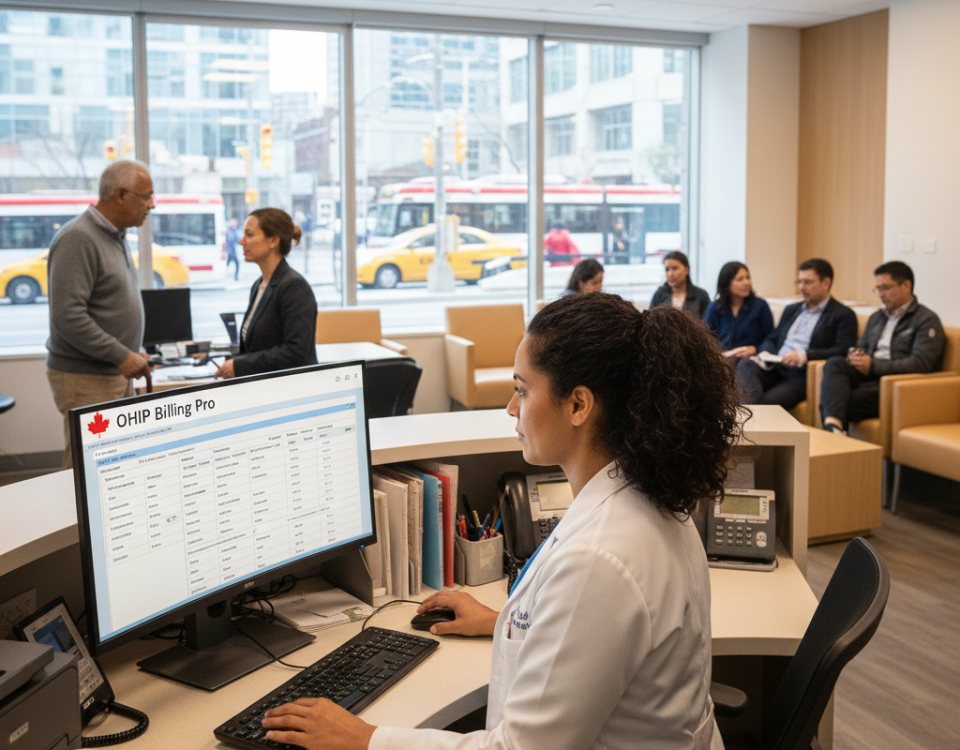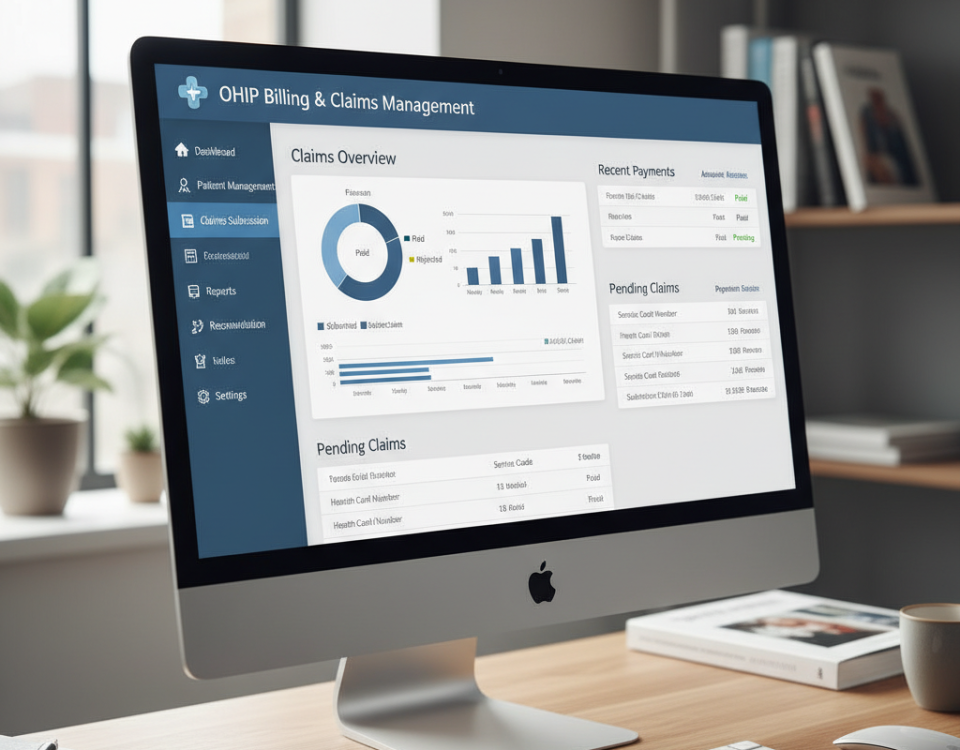- Home
- About Us
- EMR Features
-
-
- EMR Features
-
- Patient Health Features
-
- Clinic Features
-
-
- Specialties
-
- Blog
- Contact Us
7 Things Every New Ontario Physician Should Know About OHIP Medical Billing

Navigating OHIP medical billing can initially feel overwhelming, especially when choosing the right OHIP billing software to manage claims efficiently. Ontario’s publicly funded healthcare system is structured to ensure universal access, but the billing process itself involves careful attention to detail, accuracy, and ongoing updates. For physicians just starting out in Ontario, getting a solid handle on how the Ontario Health Insurance Plan (OHIP) billing process works is essential to getting paid correctly and on time.
This guide covers the foundational aspects of medical billing in Ontario and provides practical insights to help reduce errors, improve workflow, and avoid costly delays.
1. OHIP Billing Is Code-Based and Highly Specific
Every procedure, consultation, and diagnostic service billed to OHIP must be coded correctly using the Ontario Schedule of Benefits (SOB). These codes include the service type and qualifiers like patient age, time spent, and diagnosis.
For new physicians, understanding how to interpret and apply these codes is key. Even minor inaccuracies can lead to rejected claims or underpayment. It’s not enough to just know what service was delivered; it must be documented and coded exactly as required by the Ministry of Health.
Also read: https://alembicoemr.com/ohip-diagnostic-codes-for-chronic-disease-management-what-to-know/
2. You Must Register with OHIP Before Billing Patients
Before submitting claims, all Ontario physicians must register with OHIP and obtain a billing number. This registration connects the provider’s services with the Ministry’s processing system and allows payments to be issued directly.
The registration process involves submitting credentials, practice details, and other verification materials. It’s important to begin this process early, especially for those setting up independent practices or transitioning from residency to full-time clinical work.
3. Billing Errors Can Lead to Rejections or Payment Delays
Rejected claims are a common issue in medical billing in Ontario. Errors such as incorrect patient data, mismatched service dates, or use of outdated billing codes can result in claim rejections. Each rejected claim requires time-consuming corrections and resubmissions.
Physicians new to OHIP billing often underestimate the administrative burden associated with these errors. Routine claim reviews, staff training, and adopting billing guidelines specific to the specialty can help reduce these occurrences.
Also read: https://alembicoemr.com/how-to-handle-rejections-and-appeals-in-ohip-billing/
4. You’ll Need OHIP-Compliant Medical Billing Software
A major step in running a smooth operation is selecting the right OHIP billing software. These platforms are designed to automate claim submissions, manage fee codes, and handle rejections efficiently. The best software integrates directly with EMRs and ensures real-time updates of OHIP codes and rules.
Beyond automation, billing software helps practices stay organized, run reports, and maintain compliance with provincial standards. For clinics juggling multiple practitioners, having a centralized and reliable billing solution is non-negotiable.
Also read: https://alembicoemr.com/best-practices-for-billing-complex-procedures-under-ohip/
5. Know the Difference Between Fee-for-Service and Alternative Payment Plans
Ontario offers different models for physician compensation, with the most common being fee-for-service (FFS) and alternative payment plans (APPs). FFS involves billing OHIP for each individual service provided, while APPs involve agreements with specific deliverables or salary-based payments.
Understanding which model applies to the practice or role is important for both the administrative setup and long-term financial planning. Each model comes with unique billing codes and documentation expectations.
6. Keeping Accurate Documentation Is Essential for Audits
The Ministry of Health conducts routine audits to ensure physicians are billing accurately and ethically. These audits may request medical records that support submitted claims.
Clear, detailed documentation is essential to defend billed services. Notes should match the services claimed, include time stamps where needed, and follow OHIP’s documentation guidelines. Lapses in documentation can result in repayments or penalties.
Establishing a consistent documentation workflow from day one helps mitigate audit risk and improve claim accuracy.
7. You Can Outsource Your OHIP Medical Billing
Not every practice has the time or staff to manage OHIP billing in-house. Outsourcing OHIP medical billing to specialized service providers is common, especially for solo practitioners and growing clinics. These services handle submissions, rejections, and updates, allowing physicians to focus on patient care.
The decision to outsource depends on the complexity of services, volume of claims, and in-house administrative capacity. Outsourcing can reduce stress and increase claim acceptance rates, provided the service provider understands OHIP policies and maintains transparency.
Setting a Strong Foundation for OHIP Billing Success
Mastering medical billing in Ontario isn’t about learning everything at once. It requires a phased approach, starting with the fundamentals and evolving with changes in code structures and compensation models. Reliable systems, proper registration, and ongoing education are central to avoiding costly mistakes and maintaining billing compliance.
For practices looking to simplify billing and improve overall efficiency, Alembico EMR offers fully integrated OHIP billing software designed for Ontario healthcare providers. From automated claims to audit-friendly recordkeeping, Alembico supports physicians at every stage of their billing process.
Looking for a better way to manage OHIP medical billing? Contact Alembico EMR today to book a personalized demo.
Tags: Ohip Billing Software, OHIP in Ontario, OHIP medical billing


